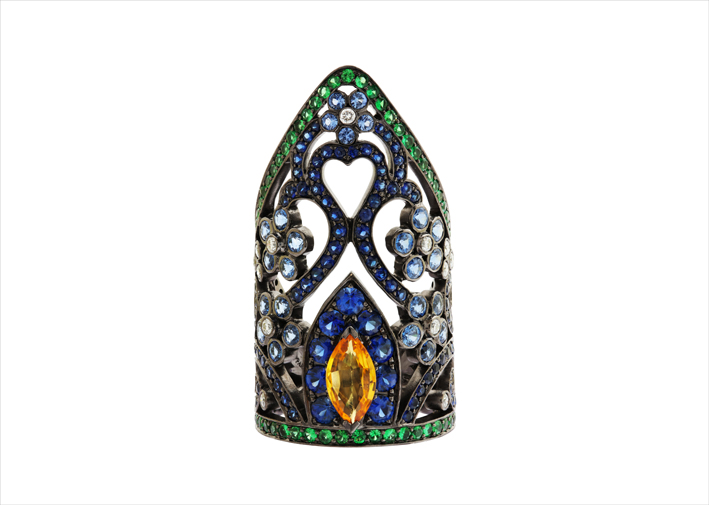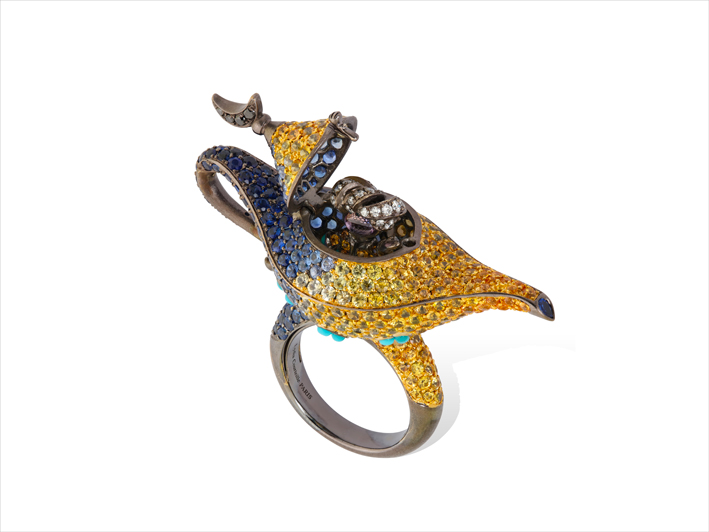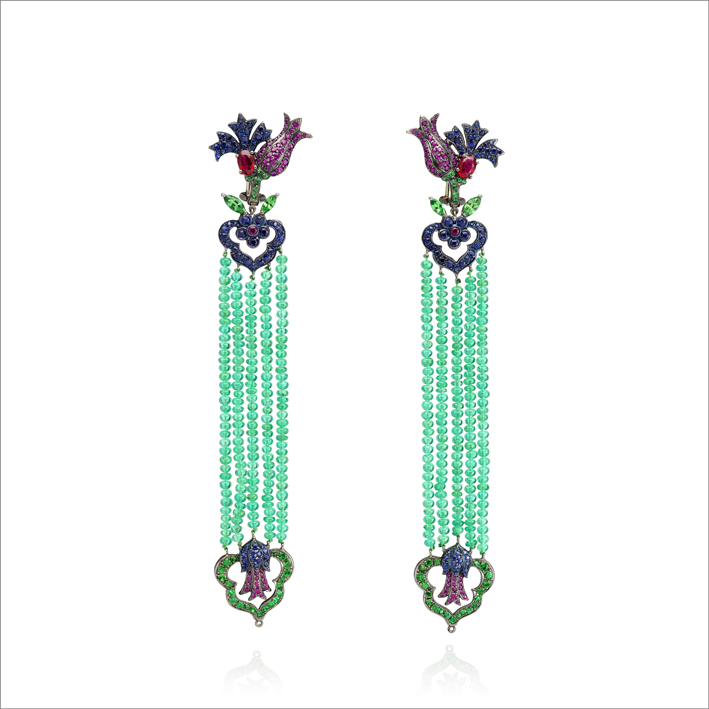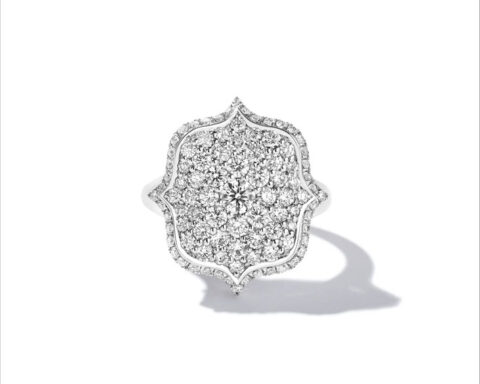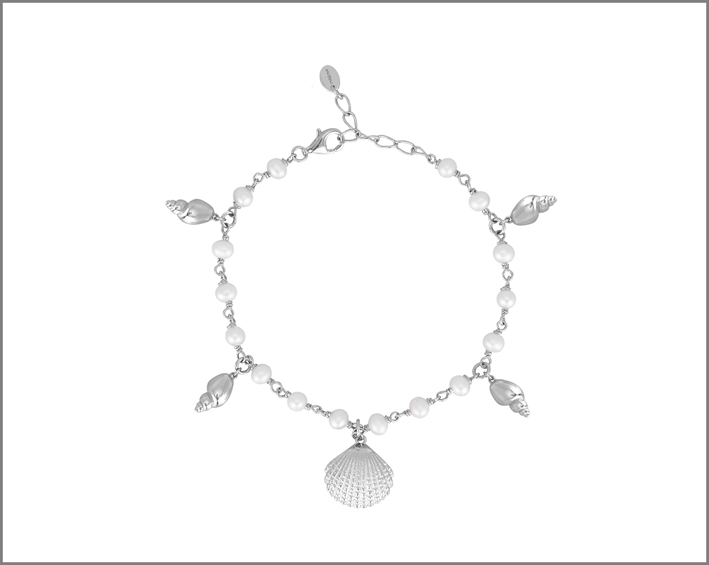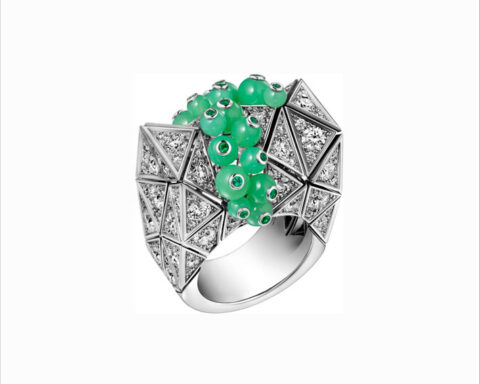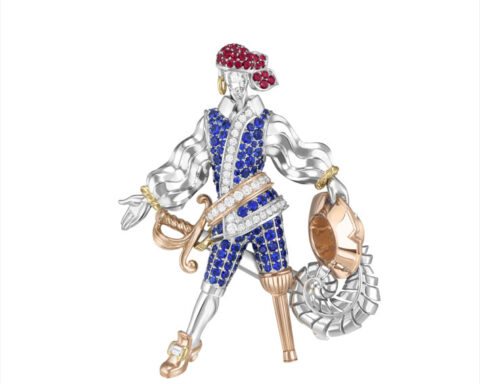There are those who go to the same crowded beach every year. And there are those who, like Lydia Courteille, prefer to travel the world by choosing fascinating, but not easy, routes. There are also those who take pictures with their smartphone on vacation and there are those who, like Lydia Courteille, compose a travel diary for images, between myths and mysterious monuments. Finally, there are those who return home with some souvenirs and those who, like Lydia Courteille, return home with ideas to transform what they have seen into a new high jewelery collection.
The latest collection is called Caravan and consists of six rings, four necklaces and two bracelets. Is there high travel jewelry? If it doesn’t exist, the Parisian creator invented it, who remembered the stages of the journey and the collection through the Zoom platform. The Caravan collection was born, in fact, from the images of a journey on the road of the ancient caravans that arrived in China from the Middle East. Distant countries and civilizations now gone, those narrated by Marco Polo and Jean-Baptiste Tavernier, which intersect with the cult of Zoroaster or the conquests of Alexander the Great and Tamerlane. Camel caravans who stopped for the night in the menageries, very Spartan hotels. And around which entire cities have sprung up over the centuries.
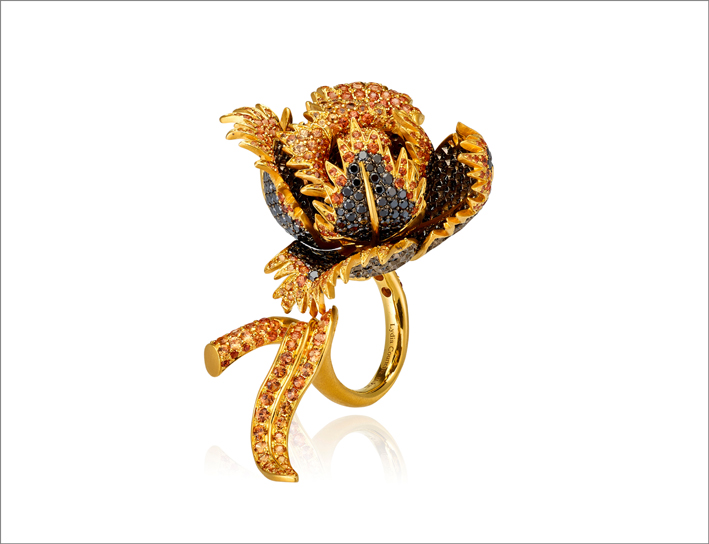
The journey (and the collection) begins in Istanbul. In fact, in 2015 Lydia Courteille had already dedicated a collection to Topkapi in Istanbul, where the sultan’s residence was located, inspired by the great love story of Roxelana and Suleiman the Magnificent, but also by the white and blue of Iznik ceramics decorated with Halfeti roses and black tulips, symbol of Turkey. A stage that the Parisian artist-designer transforms into a tulip-shaped ring in gold and black diamonds.

From Turkey to Persia, to the peacock kingdom, an ancient symbol of the country that is now Iran. The peacock characterized the gold throne of the Persian monarch, and now it is transformed into large dangling earrings, with stones of the shades of blue, purple and green and into a spectacular ring made up of the same elements.
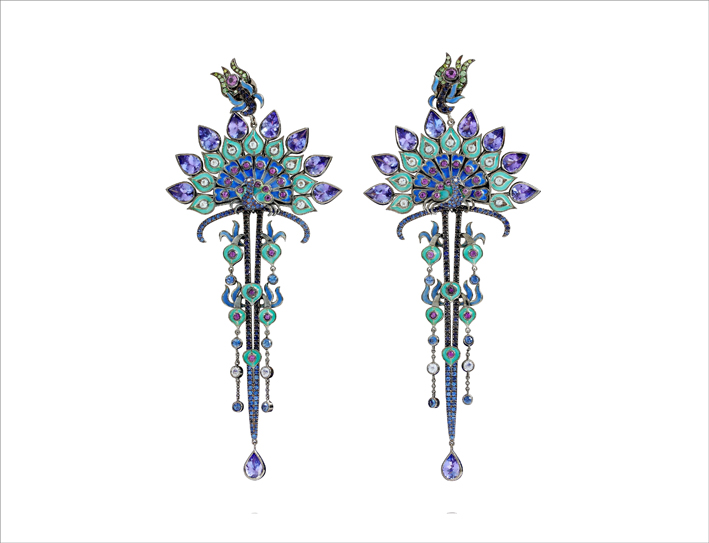
Also in Persia, two millennia ago, the cult of Zoroaster was born in the sun, glorified through a perennial sacred fire, which still burns in some temples. The visit to these ancient places of worship during the journey on the Silk Road, inspired Lydia Courteille a large ring that opens and shows a flame made with orange and yellow sapphires, tsavorites and a large blue zircon on the top.
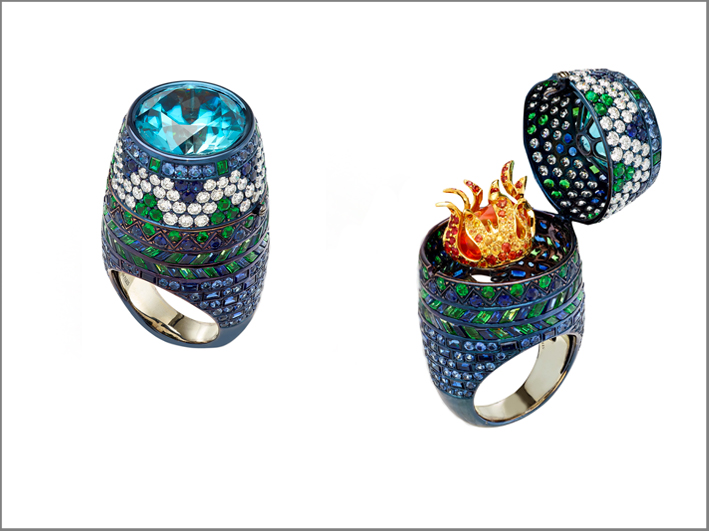
Another aspect of the Zoroastrian religion is the cult of the dead exposed to the sun and to the raids of vultures. The memento mori (remember you must die) in this collection is represented by a ring that hides two skulls made of gold, 244 sapphires, 139 white diamonds, 73 brown diamonds, 32 onyxes.
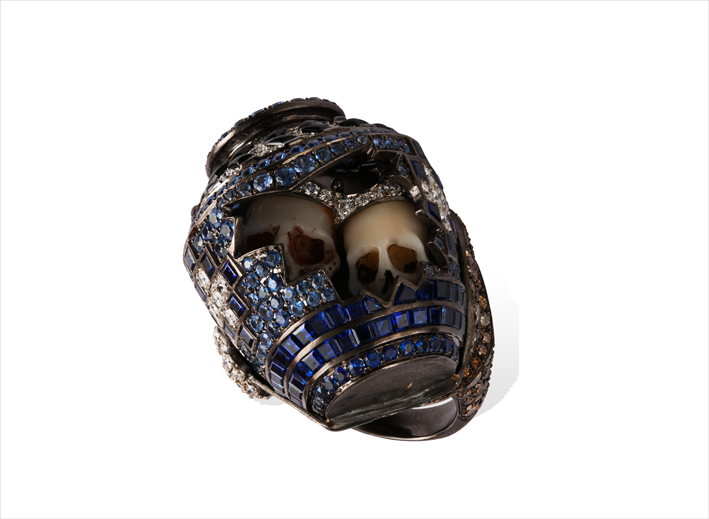
On the Silk Road was also born the myth of Tamerlane, the last conqueror of Central Asia as leader of the nomadic warriors. Tamerlane’s great-grandson, Babur, conquered northern India and became the first Mughal emperor. That culture has left spectacular monuments, such as the Taj Mahal, but also like the Tamerlane mausoleum in Samarkand. A ring in the collection represents a vulture, a guardian of the sky above the ancient monument located in Uzbekistan.
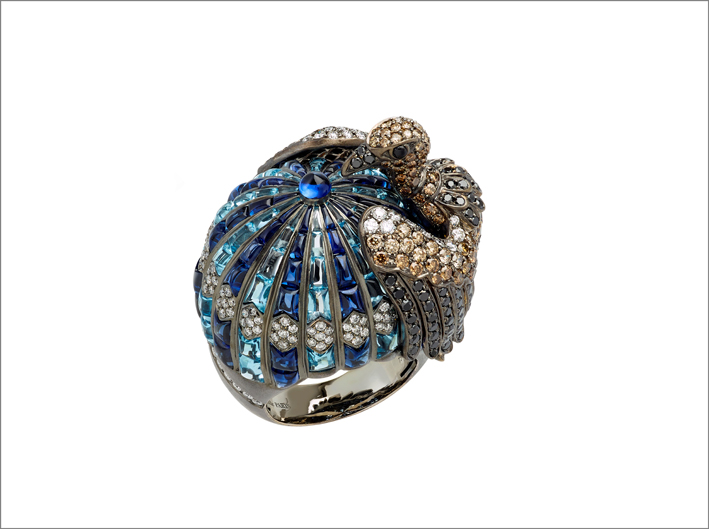
Another aspect of the Eastern myth is magic. Fairy tales such as those of the Thousand and One Nights contain a timeless charm. A ring from the Carvan collection alludes to the Aladdin ring, which opens revealing a precious secret. But in the long and fascinating journey of Lydia Courteille there is also much more, such as a bracelet inspired by Dario the Great, the Mespotanic civilization, but also a pendant and earrings reminiscent of solitary desert plants, or the ring that reworks the theme of the ceramics that embellish the madrassa of Samarkand.
